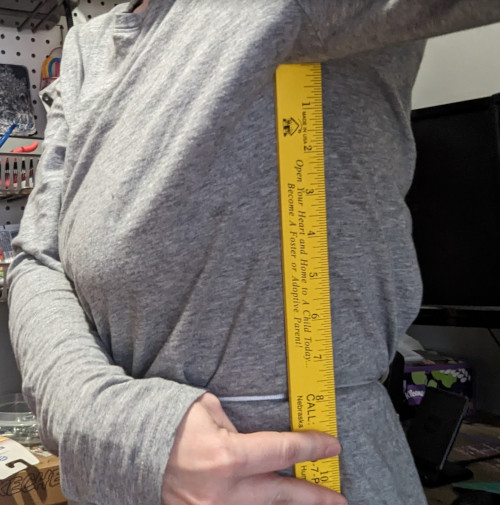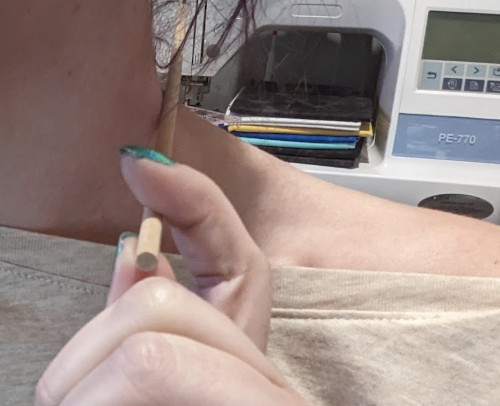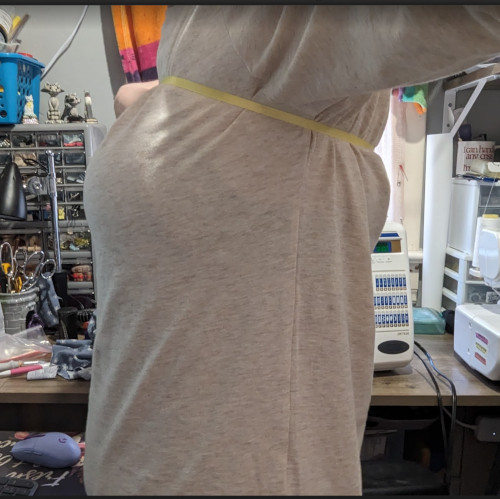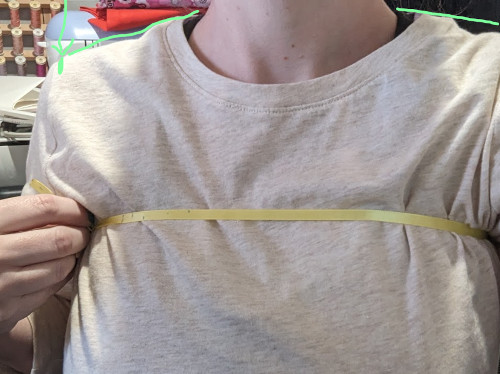I'm having trouble with measurements. What should I check?
Each of our measurements is documented with a description and two visuals. Referencing these resolves most issues.
We are working on QA functionality that detects possible issues and brings them to the user's attention in a way that makes sense.
In the meantime, here are some places to start looking if you're having trouble with your measurements.
General notes
Trouser problems are almost always caused by vertical measurements that determine the room we have to construct the pants top. For example, waist to upper leg must be longer than waist to seat; otherwise there is negative room to construct the pants.
The waist measurement location is an important vertical reference that should remain consistent during the measurement process. You should be measuring all waist-related vertical measurements (waist to seat, waist to hips, HPS to waist, waist to floor, ...) from that same horizontal plane.
Trouble measurements
There are a few measurements we've noticed tend to cause problems.
Waist to armpit
The waist to armpit is a straight vertical measure, not curvilinear (following the curve of the body). It should be at the bottom edge of your armpit, only as high as a shirt would be comfortable sitting (not digging in).

The waist to armpit measurement is used to calculate where the bottom of the sleeve opening is located. An incorrect waist to armpit measurement can affect the shape of the sleevecap and size of the sleeve opening.
High point shoulder (HPS)
HPS, which is used in several measurements, is one of the harder spots to get perfect.
Here are two approaches.
One way is to take a pencil, pen, or small dowel to find the point where your neck meets your shoulder, as well as the highest point as that's where the pencil or dowel will touch the shoulder. If you use that method, you ideally want the tool you're using to be parallel with the floor so you can find that high point.

Another way is with a ribbon. Take a longer ribbon and put it over your neck/shoulder like a cross body bag. It helps to be able to feel where the neck ends and the shoulder begins with a small amount of pressure on the ribbon. You'll need to determine where the shoulder seam should sit, but the ribbon will tell you where the HPS should sit once you have the shoulder seam determined as it will be where the two lines cross.

High bust
High bust is a horizontal measurement that does not need to be perfectly horizontal. It should go around your torso at the narrowest part of the upper chest, over the bust, under the arms, and across the back, but does not need to be parallel to the ground all the way around.


Shoulder slope
Many have had luck using an inclinometer app on a smartphone to measure shoulder slope.
Seat and hips
Sometimes people have seat and hips reversed.
In FreeSewing terms, hips is measured at the upper point of the hip bones. Some other sources call this the "high hip".
Seat is across the fullest part of your butt. Some other sources call this the "hip".
For FreeSewing patterns and measurements, the seat is always located below the hips.
Waist
The waist measurement is important, and unfortunately it is also one of the most difficult measurements to locate and take correctly.
Description
When people hear "waist", they might think of where the waistband on trousers sits on the body. However, the "waist" is entirely different when referring to the sewing measurement. Instead, it is is the location on the body that is sometimes known as the "natural waist".
-
Typically it is above the hip bone and below the bottom of the ribcage. For some this is a very small area, and for others there's a much larger gap between the two.
-
It is sometimes described as the point at which your upper body bends when you bend sideways.
-
It is sometimes described as the narrowest part of your torso, (although this description will be unhelpful for people with larger stomachs, whose waists might not be the narrowest part).
-
Often it is higher up on the torso than people expect, nearer to the ribcage than to the hips and above the navel.
Again, thinking about trousers waistbands is often misleading and results in incorrect measurements. Trousers, slacks, and jeans that are not "high rise" have waistbands that sit well below the natural waist. Only high rise jeans sit close to, sometimes at, the natural waist.
Measuring Tips
Try bending sideways and noting the point where your body creases. (For bonus points, put your hand on your waist and sing "I'm a little teapot".)
Or, take a length of 1/4-to-3/4-inch wide elastic and tie or sew the ends together to form a band around your waist, snug enough not to slide off, but loose enough to not change the waist circumference measurement. Now try bending from side to side (think "I'm a little teapot" movements), or otherwise moving and walking around to see if the elastic band naturally slips into place at the natural waist. Or, if this is uncomfortable or does not work, you can simply place the elastic band at the location you think most accurately denotes your natural waist.
Keep wearing this elastic band as you take other measurements, as a consistent reference for the location of the waistline. It will make it easier to take other waist-related measurements like waist to floor, waist to armpit, etc.